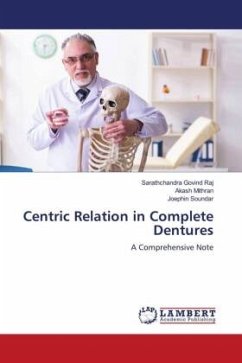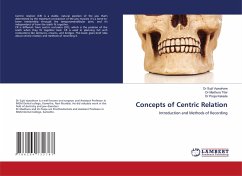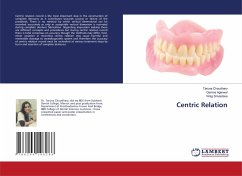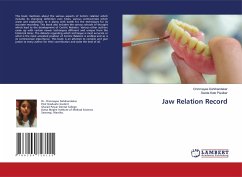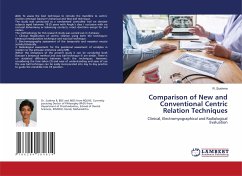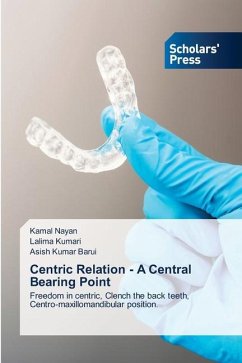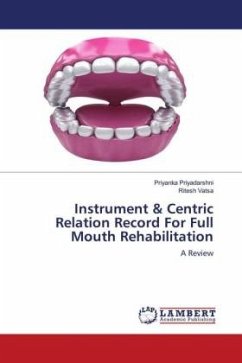
CENTRIC RELATION AND ITS CONTROVERSIES
Versandkostenfrei!
Versandfertig in 6-10 Tagen
53,99 €
inkl. MwSt.

PAYBACK Punkte
27 °P sammeln!
Centric relation (CR) is a vital concept in dentistry, particularly in prosthodontics and orthodontics. It is defined as the maxillomandibular relationship when the condyles are in their most posterior and superior position in the glenoid fossae, serving as a bone-to-bone reference for various dental procedures. Historically, CR has evolved from a focus on occlusal relationships based on anatomical landmarks to a recognition of CR as a non-strained, repeatable position. This evolution has led to debates about CR's precise definition and clinical reproducibility. A primary controversy is the la...
Centric relation (CR) is a vital concept in dentistry, particularly in prosthodontics and orthodontics. It is defined as the maxillomandibular relationship when the condyles are in their most posterior and superior position in the glenoid fossae, serving as a bone-to-bone reference for various dental procedures. Historically, CR has evolved from a focus on occlusal relationships based on anatomical landmarks to a recognition of CR as a non-strained, repeatable position. This evolution has led to debates about CR's precise definition and clinical reproducibility. A primary controversy is the lack of consensus among professionals; some favor a rigid interpretation based on anatomy, while others support a dynamic understanding that includes functional considerations.Reproducibility methods, such as occlusal splints and digital technologies, also spark debate, as some may not capture individual anatomical nuances, affecting treatment outcomes. Moreover, patient comfort and satisfaction are often overlooked. Incorporating patient feedback into CR applications can lead to more tailored treatment plans.





